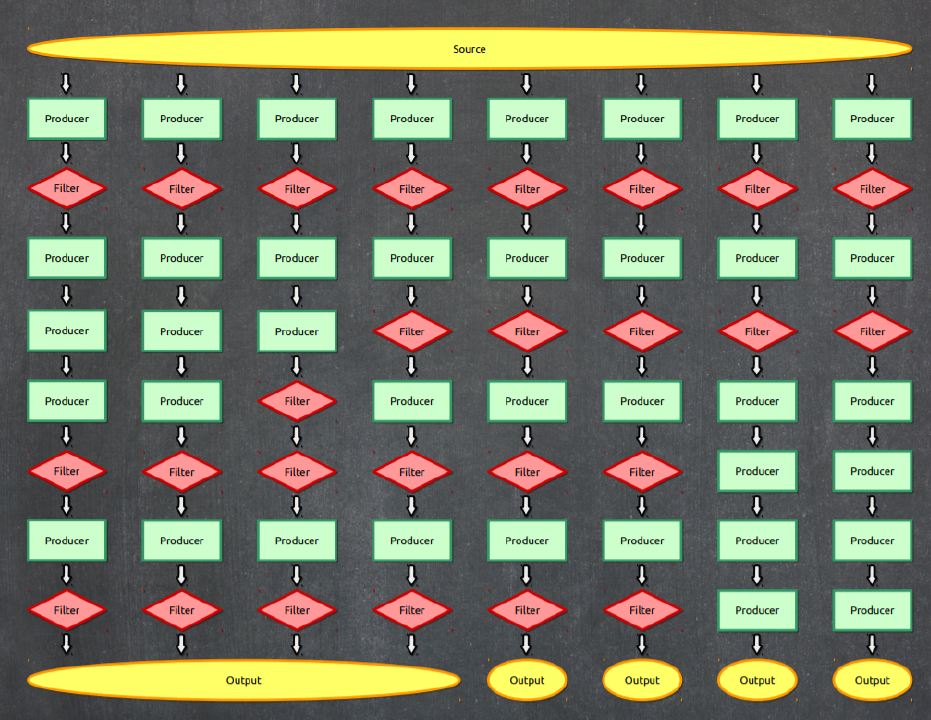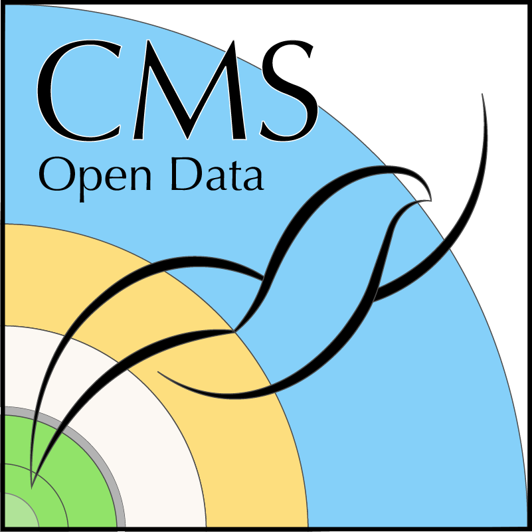CMS Trigger System
Last updated on 2024-07-18 | Edit this page
Estimated time: 20 minutes
Overview
Questions
- What is the CMS trigger system and why is it needed?
- What is a trigger path in CMS?
- How does the trigger depend on instantaneous luminosity and why are prescales necessary?
- What do streams and datasets have to do with triggers?
Objectives
- Learn about the CMS trigger system.
- Understand the basic concept of trigger paths.
- Understand the necessity of prescaling.
- Learn how the trigger system allows for the organization of CMSSW data in streams and datasets.
The CMS acquisition and trigger systems
Collisions at the LHC happen at a rate close to 40 million per second (40 MHz). Once each collision is sensed by the different subdetectors, the amount of information they generate corresponds to about what you can fit in a 1 MB file. If we were to record every single collision, it is said (you can do the math) that one can probably fill out all the available disk space in the world in a few days!
Not all collisions that happen at the LHC are interesting. We would like to keep the interesting ones and, most importantly, do not miss the discovery-quality ones. In order to achieve that we need a Trigger.
Before we jump into the details for the trigger system, let’s agree on some terminology:
Fill: Every time the LHC injects beams in the machine it marks the beginning of what is known as a Fill.
Run: As collisions happen in the LHC, CMS (and the other detectors) decide whether they start recording data. Every time the start button is pushed, a new Run starts and it is given a unique number.
Lumi section: while colliding, the LHC’s delivered instantaneous luminosity gets degraded (although during Run 3 it will be mainly levelled) due to different reasons. I.e., it is not constant over time. For practical reasons, CMS groups the events it collects in luminosity sections, where the luminosity values can be considered constant.
The trigger system
Deciding on which events to record is the main purpose of the trigger system. It is like determining which events to record by taking a quick picture of it and, even though a bit blurry, decide whether it is interesting to keep or not for a future, more thorough inspection.
CMS does this in two main steps. The first one, the Level 1 trigger (L1), implemented in hardware (fast FPGAs), reduces the input rate of 40 Mhz to around 100 KHz. The other step is the High Level Trigger (HLT), run on commercial machines with good-old C++ and Python, where the input rate is leveled around the maximum available budget of around 2 KHz.

There are hundreds of different triggers in CMS. Each one of them is designed to pick certain types of events, with different intensities and topologies. For instance the HLT_Mu20 trigger, will select events with at least one muon with 20 GeV of transverse momentum.
At the HLT level, which takes L1 as input, triggers are implemented using the primary CMS software, CMSSW, using pieces of it (“modules”) that can be arranged to achieve the desired result: selecting specific kinds of events. Computationally, triggers are CMSSW “Paths”, and one could extract a lot of information by exploring the Python configuration of these paths. Within CMS, data is processed using C++ source code configured using Python. An example of a trigger path in a python configuration file might look like this:
PYTHON
process.HLT_Mu20_v2 = cms.Path( process.HLTBeginSequence + process.hltL1sL1SingleMu16 + process.hltPreMu20 + process.hltL1fL1sMu16L1Filtered0 + process.HLTL2muonrecoSequence + process.hltL2fL1sMu16L1f0L2Filtered10Q + process.HLTL3muonrecoSequence + process.hltL3fL1sMu16L1f0L2f10QL3Filtered20Q + process.HLTEndSequence )
Triggers are code, and those pieces of code are constantly changing.
Modifications to a trigger could imply a different version identifier.
For instance, our HLT_Mu20 could actually be
HLT_Mu15_v1 or HLT_Mu15_v2, etc., depending on
the version. Therefore, it is completely normal that the trigger names
can change from run to run.
Prescales
The need for prescales (and its meaning) is evident if one thinks of
different physics processes having different cross sections. It is a lot
more likely to record one minimum bias event, than an event where a Z
boson is produced. Even less likely is to record an event with a Higgs
boson. We could have triggers named, say,
HLT_ZBosonRecorder for the one in charge of filtering
Z-carrying events, or HLT_HiggsBosonRecorder for the one
accepting Higgses (the actual names are more sophisticated and complex
than that, of course.) The prescales are designed to keep these
inputs under control by, for instance, recording just 1 out of 100
collisions that produce a likely Z boson, or 1 out of 1 collisions that
produce a potential Higgs boson. In the former case, the prescale would
be 100, while for the latter it would be 1; if a trigger has a prescale
of 1, i.e., records every single event it identifies, we call it
unprescaled.
Maybe not so evident is the need for trigger prescale changes for keeping up with luminosity changes. As the luminosity drops, prescales can be relaxed, and therefore could change from to run in the same fill. A trigger can be prescaled at L1 as well as the HLT levels. L1 triggers have their own nomenclature and can be used as HLT trigger seeds.
You saw the effect of trigger prescaling in the pre-exercise for dataset scouting. When plotting the muon momentum, several peaks and valleys appear at the low momentum edge. If the lower-momentum triggers were unprescaled, there would be many more events in the dataset with low pt muons, making a smoothly falling curve.

Triggers, streams and datasets
After events are accepted by possibly more than one type of trigger, they are streamed in different categories, called streams and then classified and arranged in primary datasets. Most, but not all, of the datasets belonging to the stream A, the physics stream, are or will become available as CMS Open Data.
Finally, it is worth mentioning that:
- an event can be triggered by many trigger paths
- trigger paths are unique to each dataset
- the same event can arrive in two different datasets (this is speciall important if working with many datasets as event duplication can happen and one has to account for it)
Key Points
- The CMS trigger system filters uninteresting events, keeping the budget high for the flow of interesting data.
- Computationally, a trigger is a CMSSW path, which is composed of several software modules.
- Trigger prescales allow the data acquisition to adjust to changes in instantaneous luminosity while keeping the rate of incomming data under control
- The trigger systems allows for the classification and organization of datasets by physics objects of interest.
